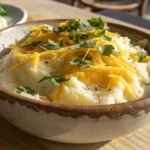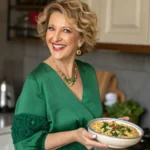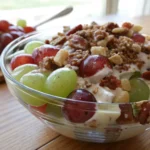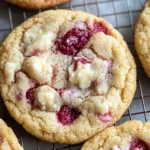What makes a baby pancake recipe truly special, and how can you create a dish that’s both delicious and nutritious for your little one? As a parent, you want to provide your baby with the best possible start in life, and that includes serving healthy baby food that’s tailored to their unique needs. A good baby pancake recipe can be a great way to introduce your baby to solid foods, and with the right ingredients and techniques, you can create a dish that’s packed with baby nutrition.
Understanding Baby-Friendly Pancakes
Introducing solids to your baby is an exciting milestone, and choosing nutritious, safe recipes is key. Baby-friendly ingredients like whole wheat flour, fruits, and vegetables ensure pancakes are easy to digest and packed with essential nutrients. Starting with small portions and gradually increasing serving sizes helps your baby adapt to new flavors and textures while supporting healthy development.
What Makes Pancakes Suitable for Babies
Pancakes can be a nutritious and delicious addition to your baby’s diet when made with the right ingredients. Some key considerations when choosing pancake recipes for babies include using whole wheat flour, avoiding added sugars, and incorporating fruits and vegetables for extra nutrition. By selecting baby-friendly ingredients and following simple recipes, you can create healthy and tasty pancakes that your baby will love.
When to Introduce Pancakes to Your Baby
Typically, babies can start eating solid foods, including pancakes, around 6-8 months. However, it’s crucial to consult with your pediatrician before introducing any new foods to your baby’s diet. They can provide personalized advice and guidance on the best foods to introduce and when to start.
Nutritional Benefits for Growing Babies
Pancakes made with baby-friendly ingredients can provide your baby with essential nutrients like carbohydrates, fiber, and vitamins. These nutrients are vital for supporting your baby’s growth and energy needs. By incorporating pancake recipes for babies into your baby’s diet, you can help ensure they receive the necessary nutrients for healthy development.
“For another take on creating soft and nutritious pancakes for your little one, explore this baby pancake recipe.“
Essential Ingredients for the Perfect Baby Pancake Recipe
When it comes to making homemade baby pancakes, the right ingredients are crucial for a delicious and nutritious meal. Whole wheat flour, oats, and fruits like bananas and apples are excellent choices, providing a good source of baby nutrition. You can also add nuts and seeds, like almonds and chia seeds, for extra nutrition and texture.
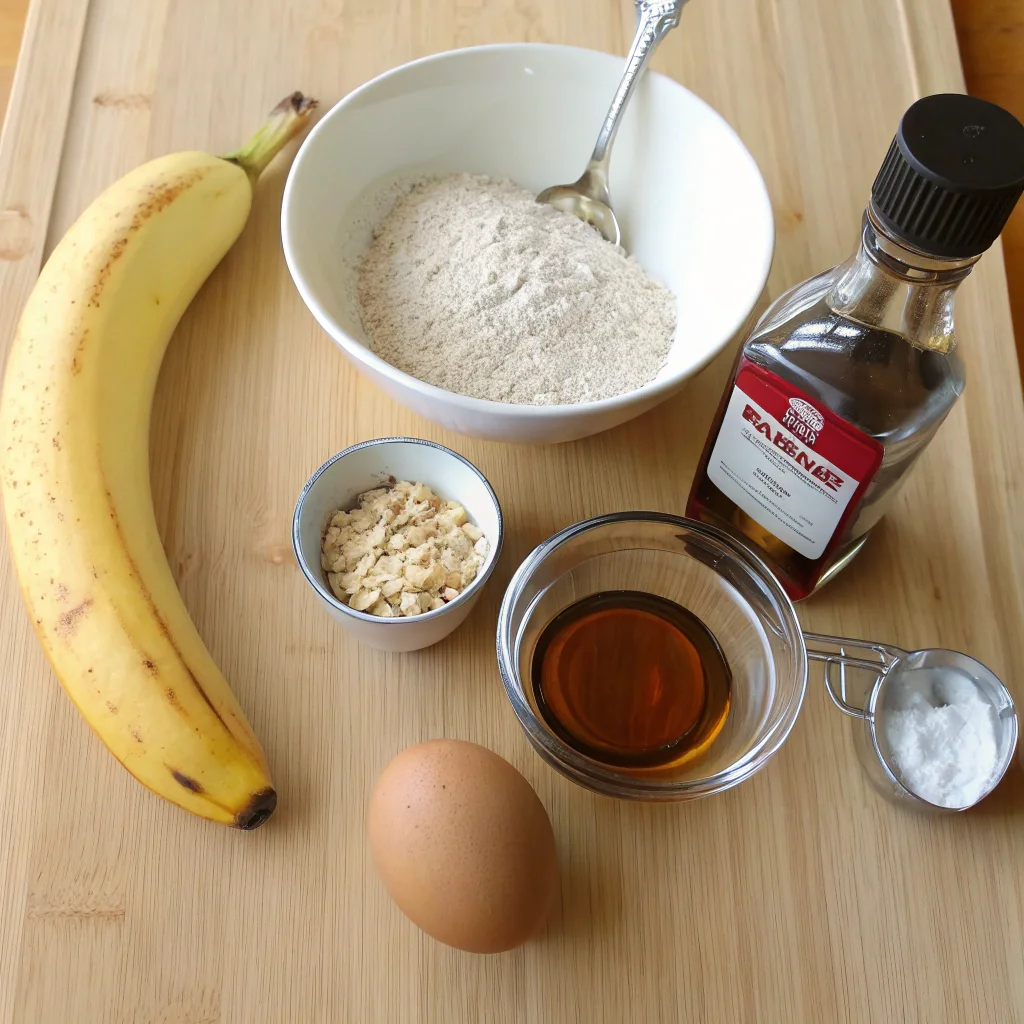
A well-balanced recipe should include a mix of healthy ingredients to ensure your baby gets the best possible start. Consider using fresh, organic produce and whole foods to minimize the risk of allergies and maximize nutritional value. Some other great options include:
- Mashed sweet potatoes for added sweetness and nutrition
- Avocado for a creamy, healthy fat source
- Eggs for protein and essential vitamins
Remember to always check with your pediatrician before introducing new ingredients to your baby’s diet, especially if they have a history of allergies or sensitivities. By choosing the right healthy ingredients and being mindful of your baby’s needs, you can create a homemade baby pancake recipe that is both delicious and nutritious, supporting optimal baby nutrition and development.
Kitchen Tools and Safety Measures
When it comes to baby food preparation, having the right kitchen tools and following proper safety measures is crucial. This ensures a safe and healthy environment for your baby to enjoy their meals. In the context of kitchen safety, it’s essential to have a well-organized kitchen with all the necessary cooking equipment within reach.
A non-stick pan, a spatula, and a blender or food processor are some of the essential cooking equipment you’ll need for preparing baby pancakes. Always supervise your baby while cooking, and keep them away from hot surfaces and sharp objects to maintain kitchen safety. Proper food handling guidelines, such as washing your hands and utensils, are also vital to prevent cross-contamination and foodborne illnesses during baby food preparation.
Required Cooking Equipment
- Non-stick pan
- Spitula
- Blender or food processor
Safety Precautions While Cooking
To ensure a safe cooking environment, always keep your baby at a safe distance from the cooking area. This will prevent any accidents and allow you to focus on preparing a healthy meal using your cooking equipment. By following these simple safety precautions and using the right cooking equipment, you can create a safe and enjoyable experience for your baby during mealtime, which is an essential part of baby food preparation and kitchen safety.
Step-by-Step Baby Pancake Recipe Guide
To make a delicious baby pancake recipe, you’ll need to follow a simple, step-by-step guide. Our recipe is designed to be easy to follow, even for those who are new to cooking. With our easy recipes, you can create a tasty and healthy meal for your baby.
Here’s a list of ingredients you’ll need:
- 1 cup of all-purpose flour
- 2 tablespoons of sugar
- 2 teaspoons of baking powder
- 1/4 teaspoon of salt
- 1 cup of milk
- 1 large egg
- 2 tablespoons of melted butter
“If you’re looking to try a restaurant-style twist, this Cracker Barrel pancake recipe offers inspiration for fluffy pancakes.”
To start, combine the dry ingredients in a bowl and mix well. In a separate bowl, whisk together the milk, egg, and melted butter. Add the wet ingredients to the dry ingredients and stir until just combined. The batter should still be slightly lumpy.
Heat a non-stick pan over medium heat and add a small amount of butter to grease the pan. Using a 1/4 cup measuring cup, scoop the batter onto the pan. Cook the pancake for 2-3 minutes, until bubbles appear on the surface and the edges start to dry. Flip the pancake and cook for another 1-2 minutes, until golden brown.
Here’s a summary of the cooking process:
- Combine dry ingredients
- Mix wet ingredients
- Add wet ingredients to dry ingredients
- Cook on a non-stick pan
With our step-by-step guide and easy recipes, you can create a delicious baby pancake recipe that your little one will love. Remember to always supervise your baby while they’re eating and to check the temperature of the food before serving.
| Ingredient | Quantity |
|---|---|
| Flour | 1 cup |
| Sugar | 2 tablespoons |
| Baking powder | 2 teaspoons |
Healthy Ingredient Substitutions and Alternatives
When making baby pancakes, it’s essential to consider your baby’s dietary needs and preferences. Sometimes, you may need to make substitutions or alternatives to accommodate their requirements. For instance, using gluten-free options like almond flour or coconut flour can be great alternatives to traditional flour. These gluten-free options can help reduce the risk of gluten intolerance or sensitivity in babies.
In addition to gluten-free options, dairy-free variations are also crucial for babies with dairy allergies or intolerance. You can use almond milk or coconut milk instead of regular milk to create a dairy-free pancake recipe. These dairy-free variations can help prevent allergic reactions and ensure your baby’s safety.
Exploring Natural Sweetening Methods
Natural sweetening methods, such as using fruits or honey, can add sweetness to your baby’s pancakes without refined sugars. These natural sweeteners are not only healthier but also provide essential nutrients and flavors to the pancakes. Some popular natural sweeteners include:
- Fructose from fruits like bananas or apples
- Honey (in small amounts and for babies over 12 months)
- Maple syrup (in small amounts and for babies over 12 months)
By incorporating gluten-free, dairy-free, and natural sweetening methods into your baby pancake recipe, you can create a healthier and safer meal for your little one. Always remember to consult with your pediatrician before introducing any new ingredients or substitutions to your baby’s diet.
| Ingredient | Substitution | Benefits |
|---|---|---|
| Traditional flour | Gluten-free flour (almond or coconut flour) | Reduces risk of gluten intolerance or sensitivity |
| Regular milk | Dairy-free milk (almond or coconut milk) | Prevents allergic reactions and ensures baby’s safety |
| Refined sugars | Natural sweeteners (fruits, honey, or maple syrup) | Provides essential nutrients and flavors, reduces sugar intake |
Storage and Reheating Tips
After preparing delicious baby pancakes, it’s crucial to store and reheat them correctly to maintain their nutritional value and safety. Proper storage methods are essential to prevent spoilage and foodborne illness. By following simple storage tips, you can keep your baby pancakes fresh for a longer period.
When it comes to reheating, it’s vital to use safe reheating techniques to avoid overcooking or undercooking the pancakes. You can use a microwave or toaster oven to warm the pancakes evenly. Additionally, freezing baby food is a great way to preserve it for future meals. By following our freezing guidelines, you can ensure that your baby pancakes remain healthy and fresh.
Proper Storage Methods
To store baby pancakes, cool them to room temperature, then refrigerate or freeze them. This helps prevent bacterial growth and keeps the pancakes fresh. You can also use airtight containers to store the pancakes and keep them fresh for a longer period.
Safe Reheating Techniques
When reheating baby pancakes, make sure to use a microwave or toaster oven to warm them evenly. You can also use a steamer to reheat the pancakes without losing their nutritional value. Always check the temperature of the pancakes before serving them to your baby to ensure they are not too hot.
Freezing Guidelines
Freezing baby food is a great way to preserve it for future meals. To freeze baby pancakes, simply place them in an airtight container or freezer bag and store them in the freezer. When you’re ready to serve, simply thaw the pancakes overnight in the refrigerator or reheat them using a microwave or toaster oven. By following these storage tips and freezing guidelines, you can keep your baby pancakes fresh and healthy for a longer period.
Creative Topping Ideas for Baby Pancakes
Now that you’ve made your baby pancakes, it’s time to get creative with baby pancake toppings. From fresh fruits like strawberries and blueberries to nut butters like peanut butter and almond butter, there are countless options to choose from. You can also use yogurt, honey, or cinnamon to add flavor and nutrition.
Here are some creative ideas to consider:
- Fresh fruit slices, such as bananas or berries
- Nut butters, like peanut butter or almond butter
- Yogurt or honey for added sweetness
- Cinnamon or vanilla extract for extra flavor
When choosing healthy options for your baby’s pancake toppings, consider the following:
- Opt for fresh fruits and nuts
- Avoid added sugars and artificial ingredients
- Choose whole grain or gluten-free options
Remember, the key is to keep it simple and fun. Experiment with different baby pancake toppings and find the perfect combination for your baby’s taste buds. With creativity, you can create a delicious and healthy breakfast that your baby will love.
“For a fruity variation, check out this banana waffle recipe that combines the sweetness of bananas with a fun texture.”
Adapting Your Baby Pancake Recipe for Different Ages
As your baby grows, their nutritional needs and preferences change. Adapting your baby pancake recipe to meet these changing needs is crucial for their development. A well-planned baby pancake recipe can provide the necessary nutrients and textures for your baby’s age group.
When it comes to age adaptations, a baby pancake recipe can be modified to suit different stages of growth. For younger babies, a simple recipe with a single ingredient is best, while older babies can handle more complex ingredients and textures. Considering a toddler-friendly approach, you can add more protein sources like eggs and nuts, and use whole grains for added fiber.
Guidelines for Different Ages
- For 6-9 months, focus on single-ingredient pancakes and gradual introductions to new foods.
- For 9-12 months, introduce more complex ingredients and textures to the baby pancake recipe.
- For toddlers, consider adding more protein sources and using whole grains for a nutritious and toddler-friendly meal.
A well-adapted baby pancake recipe can make a significant difference in your baby’s mealtime experience. By incorporating age adaptations and a toddler-friendly approach, you can create a delicious and nutritious meal that your baby will love. Remember to always prioritize your baby’s nutritional needs and preferences when modifying your baby pancake recipe.
| Age Group | Recipe Adaptations |
|---|---|
| 6-9 months | Single-ingredient pancakes, gradual introductions to new foods |
| 9-12 months | More complex ingredients and textures |
| Toddlers | Added protein sources, whole grains for fiber |
Conclusion: Making Memorable Moments with Baby’s First Pancakes
As you embark on the journey of making your baby’s first pancakes, cherish the precious moments and the memories you’ll create. These baby’s first pancakes are not just a delicious meal, but a milestone in your little one’s life. With our comprehensive guide, you now have the knowledge and skills to craft the perfect, memorable pancakes that will nourish your baby’s growing body and ignite a lifelong love for healthy, homemade cuisine.
Ultimate Guide: Answering FAQs About Pancakes for Babies
Introducing pancakes to your baby’s diet can be a delightful experience. This guide answers all your pressing questions about pancakes for babies, from safety to recipes and preparation tips. Let’s dive in!
Can Babies Eat Regular Pancakes?
Yes, babies can eat pancakes, but not all types of pancakes are suitable. Regular pancakes often contain added sugar, salt, or processed ingredients that may not align with a baby’s nutritional needs.
Tips for Making Regular Pancakes Baby-Friendly:
- Skip the sugar and salt: Use natural sweeteners like ripe bananas or unsweetened applesauce.
- Use whole-grain flour: Opt for oat, whole wheat, or almond flour for added nutrients.
- Adjust the texture: Ensure pancakes are soft and easy to chew by making smaller, thinner versions.
What Is the Difference Between a Dutch Baby and a Pancake?
Key Differences:
- Cooking Method:
- Dutch Baby: Baked in the oven, resulting in a puffed texture.
- Pancake: Cooked on a skillet or griddle.
- Texture:
- Dutch Baby: Crisp edges with a soft, custard-like center.
- Pancake: Uniformly soft and fluffy.
- Suitability for Babies:
- Dutch Baby: Typically richer and may include added butter or sugar.
- Pancake: Easier to customize and baby-friendly when prepared with simple, wholesome ingredients.
Can a 6-Month-Old Have Cow’s Milk in Pancakes?
Yes, a 6-month-old can have cow’s milk in cooked dishes like pancakes. However, cow’s milk should not replace breast milk or formula as their main drink until after 12 months of age.
Safe Ways to Use Cow’s Milk in Pancakes:
- Add a small amount to the batter for moisture.
- Ensure the milk is thoroughly cooked to aid digestion.
- If concerned, substitute with formula, breast milk, or non-dairy alternatives like oat milk.
How to Make Baby Formula Pancakes?
Using baby formula in pancake recipes ensures a familiar and safe taste for your baby.
Simple Recipe for Baby Formula Pancakes:
Ingredients:
- 1 ripe banana (mashed)
- 1 egg yolk
- 3 tablespoons oat flour
- 1/4 cup prepared baby formula
- 1/4 teaspoon baking powder
Instructions:
- Mash the banana until smooth.
- Add the egg yolk and mix well.
- Stir in the baby formula.
- Gradually add the flour and baking powder.
- Cook small portions on a non-stick skillet over low heat until bubbles form. Flip and cook the other side.
These pancakes are perfect for babies 6 months and older.
How to Make Pancake Formula?
Creating your pancake mix allows you to whip up fresh, nutritious pancakes quickly.
Homemade Pancake Formula Recipe:
Dry Ingredients:
- 1 cup oat flour or whole wheat flour
- 1 teaspoon baking powder
- Pinch of cinnamon
Instructions:
- Mix the dry ingredients and store them in an airtight container.
- When ready to use, combine 1/2 cup of the mix with:
- 1 mashed banana or 2 tablespoons unsweetened applesauce
- 1 egg yolk
- 1/4 cup breast milk, formula milk, or water.
- Cook as described in the previous recipe.
How to Make Formula Milk at Home?
If you need to prepare formula milk for pancake recipes, follow these steps:
- Boil water: Let it cool to approximately 70°C (as recommended by most formula brands).
- Measure formula powder: Follow the instructions on the formula packaging for the correct powder-to-water ratio.
- Mix thoroughly: Ensure no lumps remain, creating a smooth liquid.
- Cool before use: Allow the formula to cool to a safe temperature before adding it to your pancake batter.
Pro Tips:
- Always use freshly prepared formula for cooking.
- Avoid reheating formula milk multiple times.
